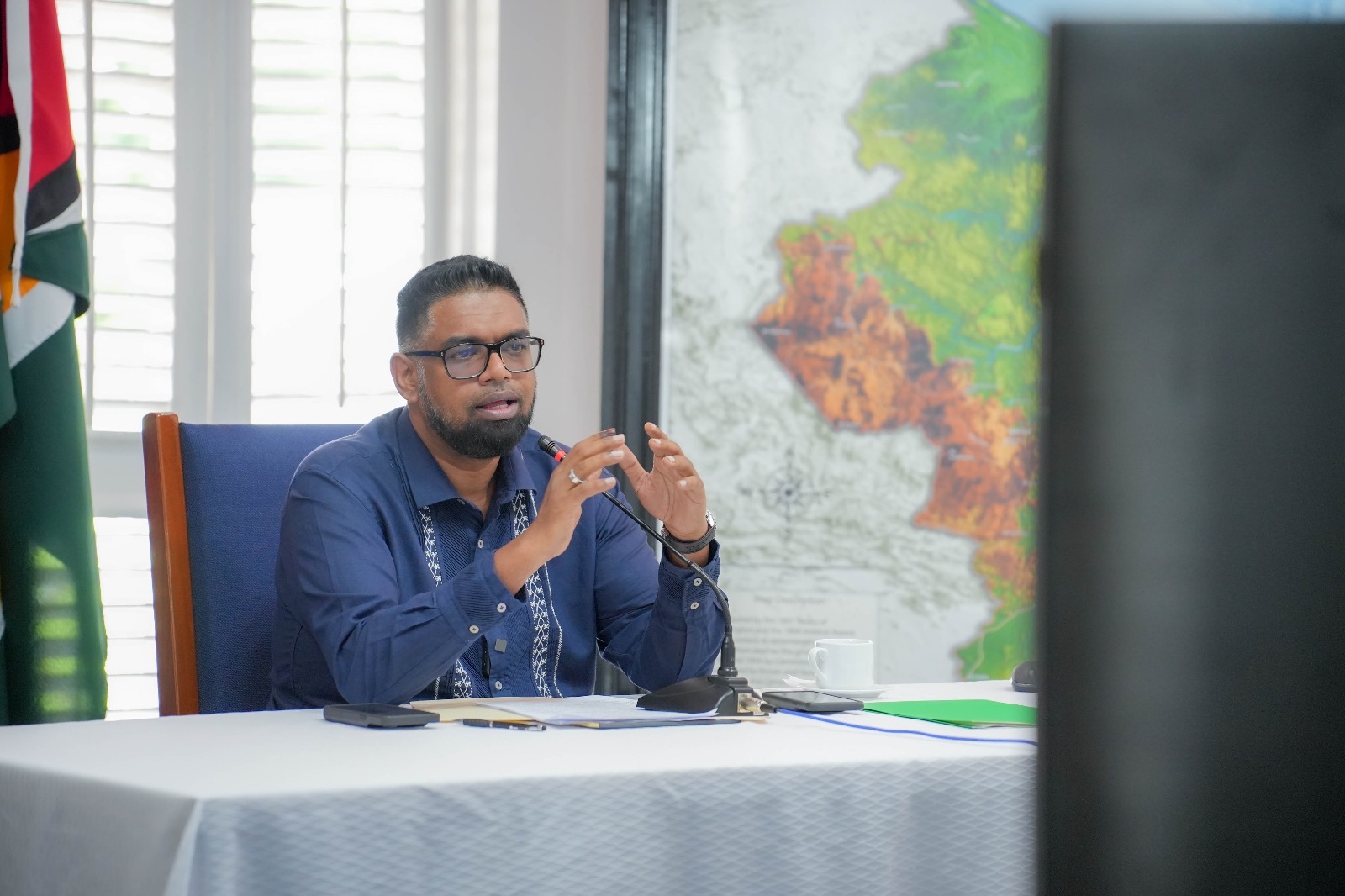
Says highly integrated food production system needed
Georgetown, Guyana—(June 13, 2023) His Excellency President Dr Irfaan Ali said that the CARICOM Region has the competitive advantage to position its food market as high-value and specialised.
The President said that with a consensus across the region on the need to enhance food security, efforts could be made to overhaul the system and revolutionise food production.
He told investors and key enablers virtually at the Caribbean Agri-Food Investors Conference that countries need to create a structure, where agriculture production is one component of a “highly integrated food production system”.
The region, he noted, needs to think big and envision an ecosystem of development, which will amplify the production of traditional crops, enhance the growth of non-traditional crops and facilitate their rapid movement while lowering their overall production cost.
He listed the proximity of the region to the North American market and highlighted the potential of the production of fish and shrimp (via aquaculture), honey, spices, cocoa, coffee, barley, corn, and soya, among local fruits and vegetables and non-traditional crops.
“How do we use these opportunities to create value, expand the market and produce high-value crops? Because it must be targeted, high-value crops that we’re looking at, whether it’s the very strawberries that you’re importing, the grapes that you’re importing, whether it’s the spices, green leafy vegetables, broccoli or cauliflower.”
The President explained that historically there has been “a very narrow view of agriculture that limits it to people working in a field”. He said that agriculture has changed and the opportunity is available to invest, modernise and transform.
“We’re speaking about creating a business and economic model that works; that works for the investor, works for the people and works for the country in the context of what we want to achieve, and that context is food security and to create a high-value market.”
CRITICAL ISSUES
The President explained that one of the critical issues in creating the integrated system and high-value market is transport and logistics. This, he said, has been the “greatest bugbear of interregional trade”.
“So there are tremendous opportunities in the transport and logistics aspect of the food production system, beginning from primary production to highly specialised value-added production.”
To address this, the President suggested that agricultural opportunities available in northern Brazil be examined and that the food production system be re-engineered to utilise the potential of the Portuguese-speaking nation, which can be moved through Guyana and into the Caribbean and North America.
With this option, the President said, food would be able to get to the Caribbean and further up north through Guyana in less than 72 hours. This, he explained, is only possible if there are tangible investments in the transportation, logistics and food hub ecosystem that are part of an integrated system. The existing transport system for food moving from northern Brazil to North America takes almost three weeks.
“That is the first positioning I want to put to you, what constitutes the regional food hub, the infrastructure that must come in supporting that food hub, supporting the transport and logistics opportunity, the distribution opportunity, the value-added opportunity that will come.”
The President also spoke of the need for investments in technology and modernised agriculture, training and development, infrastructure, and sustainable and resilient systems.
“The integrated food production system is changing. With technology, you can now produce the same amount of potatoes that you normally produce on 100 acres of land, on less than five acres of land.”
NECESSARY INVESTMENTS
Food production, the President explained, is integral to the growth and development of the region and critical to our financial development.
He said that the region’s food import bill stands at more than US$6b and all efforts must be made to reduce that amount.
“Recently, as a region and here in Guyana, we are investing heavily in technology and examining the viability for other crops, for example, wheat and barley. We have a lot of land that can have high production of barley that can satisfy the entire regional demand and go all the way up north and take a big share of that market.”
The President also pointed to the massive transformation of Guyana’s feed production, which started in 2021 with the planting of corn and soya.
“By the time we get up to 2025-2026, we will not only be nationally secured, but we will be in a position where we can produce all the corn and soya for feed production throughout the region.”
Other substantial changes were also highlighted, including larger investments in Guyana’s brackish water for aquaculture, movements towards more women and youths becoming involved in agriculture and plans in place to enhance production with advanced technology and through the use of cheaper electricity.
Guyana holds lead responsibility for agriculture, agricultural diversification and food security in the CARICOM Quasi-Cabinet.


